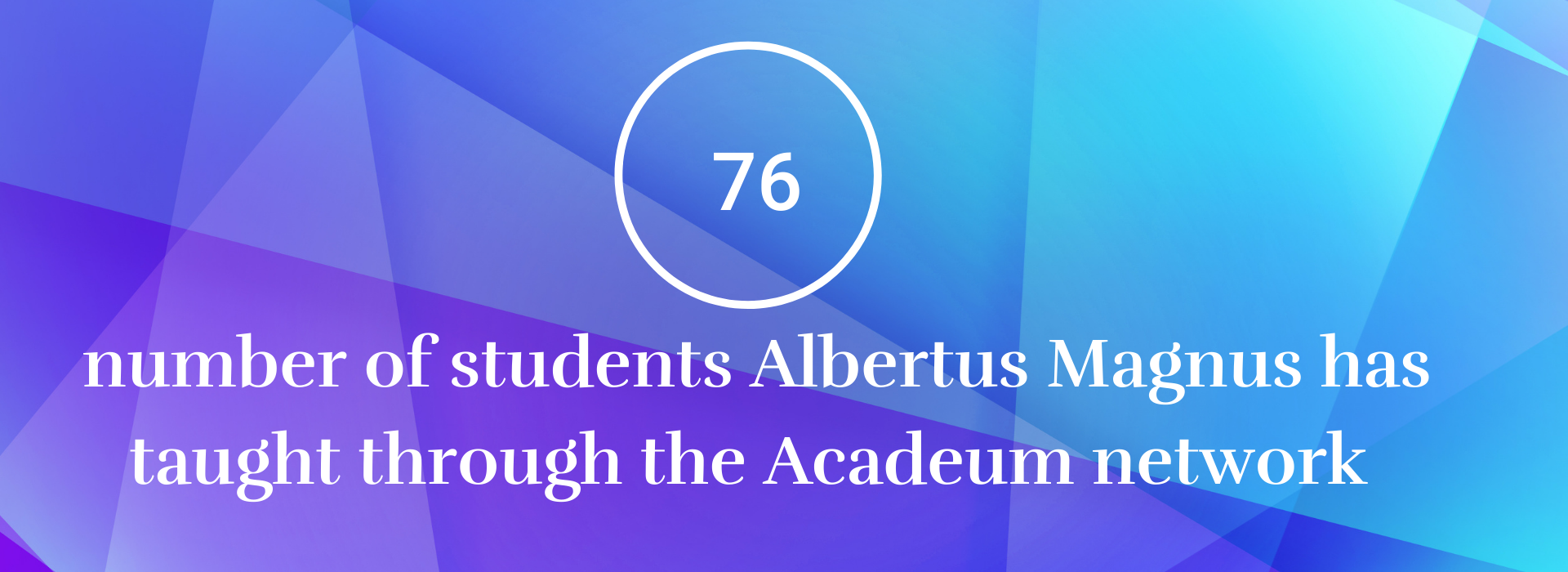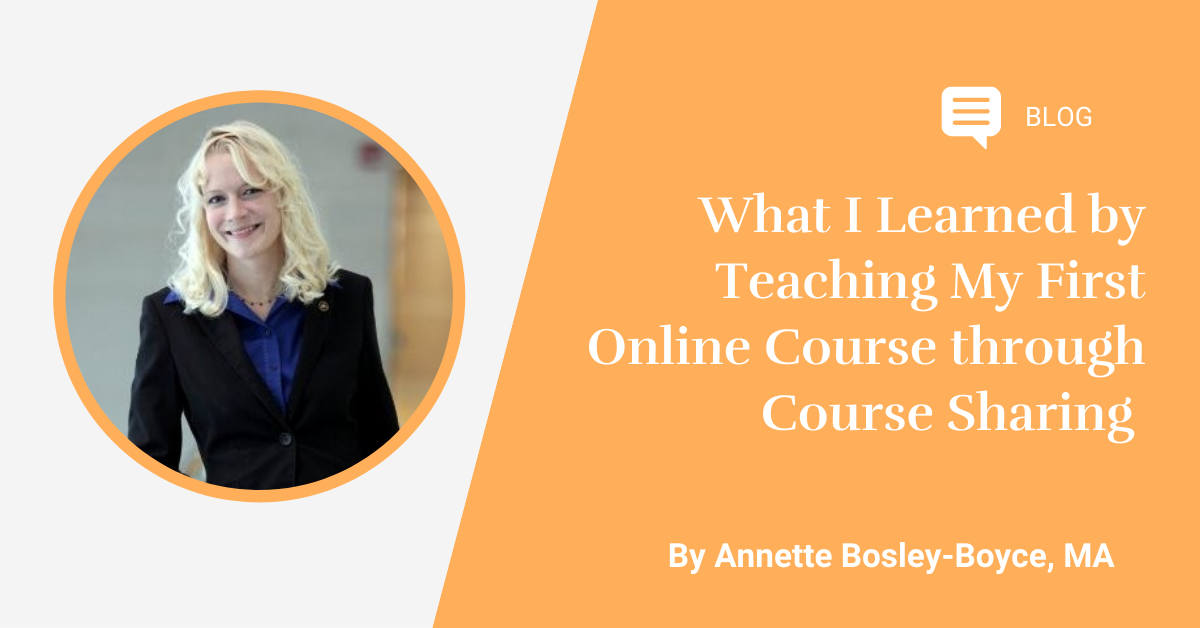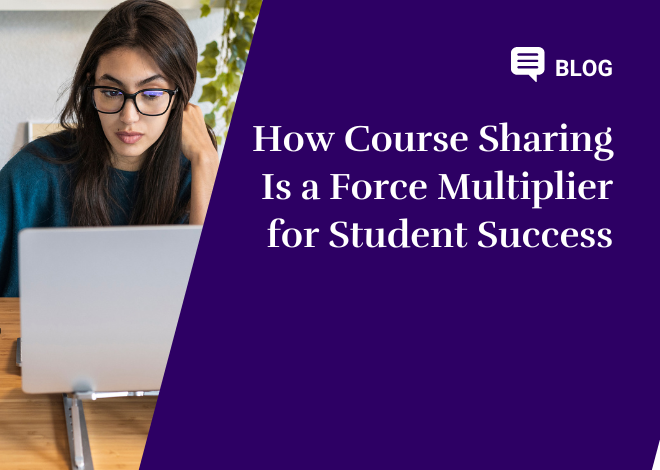This blog post was written by Annette Bosley-Boyce, Dean of the Division of Professional and Graduate Studies at Albertus Magnus College
This winter, I had the opportunity to teach my first course on the Acadeum network and to experience the unique and rewarding experience of having visiting students take part in my course, English 109, Elements of Effective Writing.
My eight-week course is designed for first year students who need additional writing support but sometimes attracts upper-level students who want to strengthen their writing skills as well.
When Albertus Magnus made my course available on the Acadeum network, I didn’t expect any students to join from other institutions. When the course started, I was surprised to find that, in addition to eight Albertus Magnus students, six students from institutions in the Acadeum network had registered for the course.
I quickly discovered that the six visiting students were enrolled at Dillard University, an HBCU in Louisiana. I was excited about the possibilities this expanded diversity opened up for all of the students and myself as an instructor. What surprised me the most about course sharing is that I really enjoyed it: it led to a deep and enriching course experience for all of us.
As a professor, I learned a lot from my first experience with course sharing. The class was asynchronous and taught online. The students I typically teach at Albertus Magnus in New Haven, Connecticut, are working adults who usually major in human services, business, or psychology. The Dillard students are college-aged students. The students who joined my class were juniors and seniors who wanted to expand their writing skills for graduate school and were majoring in nursing, pre-med, and computer science—majors that are not offered at Albertus Magnus.
Though the students in my winter course differed in age and academic majors, both sets of students are underrepresented minorities. Culturally and socially, the class was so much fun. The students had a lot to learn from and teach each other. The Dillard students brought different backgrounds and experiences to the online classroom—one student was classically trained in ballet, one was born in the UK and raised in Ghana, and one owned his own business. The Albertus Magnus students were working adults who were busy building careers and caring for families, in addition to their coursework.
Academically, I found that course sharing has the potential to enhance student learning and engagement by bringing together a diverse group of students and experiences in one classroom. The Dillard upperclassmen were able to model more advanced writing standards for the first-year Albertus Magnus students, providing more opportunities for growth within their coursework. Acadeum connected these two underrepresented groups in the classroom and allowed them to learn from and expose each other to diverse viewpoints and experiences.
As an administrator, I got to see firsthand how students from different institutions can enrich the breadth and depth of learning experiences for all students in the classroom environment.
At Albertus Magnus, we decided to offer general education courses and other popular courses, on the Acadeum network. Now, all of our courses are available for course sharing.

While my first experience with course sharing was incredibly positive, it was not without a learning curve. I came away with lots of insight into how both instructors and institutions can create a successful course sharing experience for all students. As an institution, it’s important to thoroughly welcome visiting students into the course. That’s as simple as making sure the instructor knows about course share students ahead of time. Then, instructors can make all students feel welcome throughout the duration of the course.
With online courses, especially those offered in an asynchronous format, there are obvious challenges in creating community and letting students get to know each other, but it’s especially important to foster inclusiveness and cohesion with course sharing. I found it was important to have more message and discussion boards, especially as a place for introductions at the beginning of the course, so that all students have the opportunity to engage and participate.
As I look ahead, I am excited to teach my next section of English 109 this summer. Course sharing added an extra dimension to my course. It was a joy to have different perspectives in the classroom and see how those differences can enhance the student experience and coursework.




